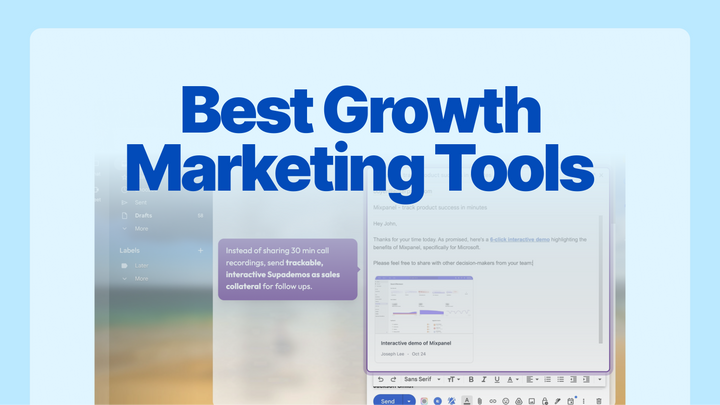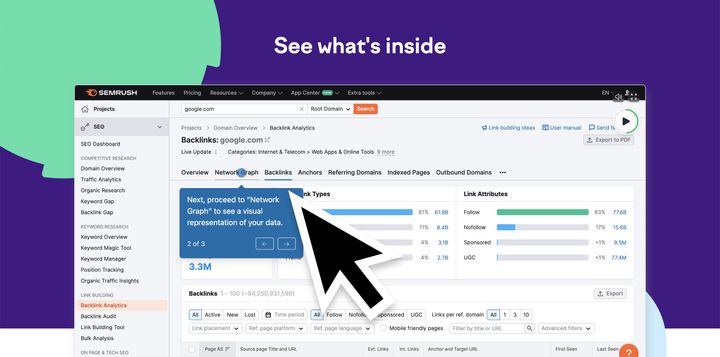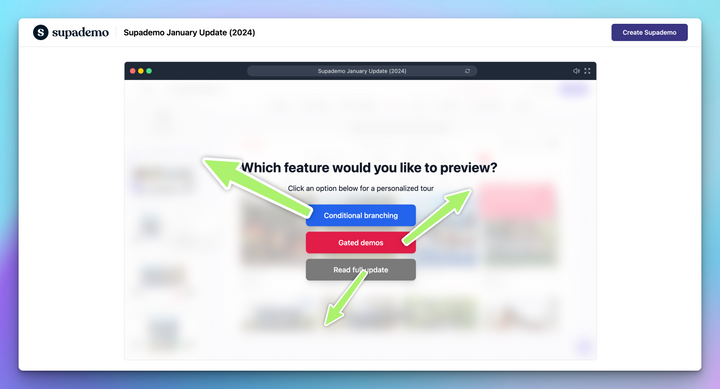Marketing budgets are currently in a downturn.
Average marketing spend dropped to just 7.7% of company revenue in 2024, way down from pre-pandemic levels. And a solid 64% of CMOs say they don’t have the resources to execute what’s on the roadmap.
That means every tool in your stack needs to justify its seat. There is no room for vanity growth marketing platforms.
In this article, we’re digging into 19 growth marketing tools that actually earn their keep.
We’ve test-driven them, combed through G2 reviews, cross-checked Reddit insights, and pressure-tested them in real campaigns.
Let's dive in.
Growth marketing tool stack 2025
| Tool | Category | Starting Price | G2 Rating | Notable Features |
|---|---|---|---|---|
| Customer.io | Email Automation | $100/month | 4.4/5 | Behavioral triggers, multi-channel messaging |
| Supademo | Interactive Demos | Free | 4.7/5 | No-code demos, embeddable workflows |
| Zapier | Workflow Automation | Free | 4.5/5 | 5,000+ integrations |
| Clay | Data Enrichment | $149/month | 4.9/5 | AI-driven personalization |
| ChartMogul | Subscription Analytics | $100/month | 4.5/5 | MRR tracking, churn analysis |
| Lemlist | Cold Email Outreach | $29/month | 4.6/5 | Personalized images, automated sequences |
| Relay.app | Workflow Automation | $20/month | 4.5/5 | Visual builder, AI workflows |
| n8n | Open-source Automation | Free | 4.7/5 | Self-hosted, customizable workflows |
| Ahrefs | SEO & Content Research | $99/month | 4.6/5 | Backlink analysis, keyword tracking |
| Contrast | Webinar Platform | $49/month | 4.8/5 | Interactive webinars, analytics |
| Cello | Customer Feedback | $25/month | 4.9/5 | Surveys, NPS tracking |
| Passionfroot | Creator CRM | $15/month | 5/5 | Campaign management, invoicing |
| Senja | Testimonial Collection | $19/month | 4.6/5 | Video testimonials, widgets |
| Supermeme.ai | AI Meme Generator | $9/month | N/A | Meme creation, branding |
| Intercom | Customer Messaging | $59/month | 4.4/5 | Live chat, bots, help center |
| Userpilot | Product Onboarding | $249/month | 4.6/5 | In-app guidance, surveys |
| Veed.io | Video Editing | Free | 4.5/5 | Subtitles, screen recording |
| Buffer | Social Media Management | Free | 4.3/5 | Scheduling, analytics |
| Canva | Design Tool | Free | 4.7/5 | Templates, collaboration |
1. Customer.io
Customer.io is a data-driven marketing automation platform that processes millions of user events daily to trigger personalized campaigns. When a user signs up for your product but then becomes inactive, Customer.io provides a solution.
For instance, if a user visits the pricing page multiple times but does not convert, you can prompt them with a free trial offer email along with an in-app modal.
The platform allows for precise segmentation, where businesses can create targeted campaigns based on user behavior. This automation ensures that messages are relevant and timely, increasing the chances of conversion. Its flexibility makes it suitable for both technical teams through API integrations and marketers using visual workflows.
User review:
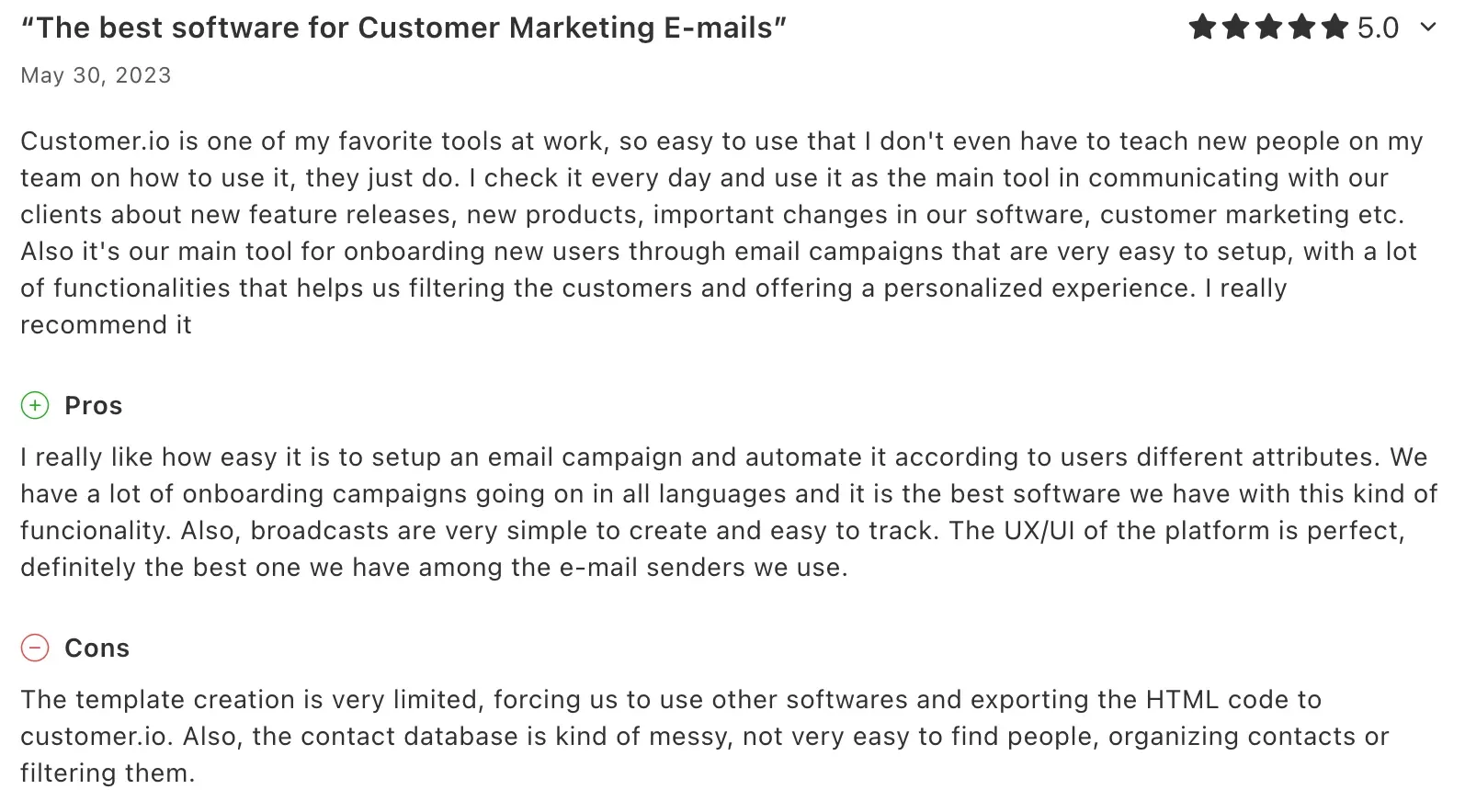
Pros:
• Super granular targeting
• Multi-channel (email marketing, SMS, in-app notifications)
• Can be used by both tech and non-tech teams (offers API solutions)
Cons:
• User experience can feel somewhat outdated
• Setup can be challenging for junior marketers
2. Supademo
Supademo allows you to create interactive, click-through product demos that highlight your solution's benefits in a clear, visual format. Instead of just showing a product through static presentations, Supademo lets you explore the product at your own pace by interacting with a clickable demo.
The platform supports easy creation through screen recording, visuals, or HTML, making it simple for non-technical teams to set up.
By embedding these demos on pricing or landing pages, businesses can help users better understand the product’s value and features before engaging in a sales conversation. The tool also provides analytics that show where users drop off, which can help refine the demo experience for better engagement.
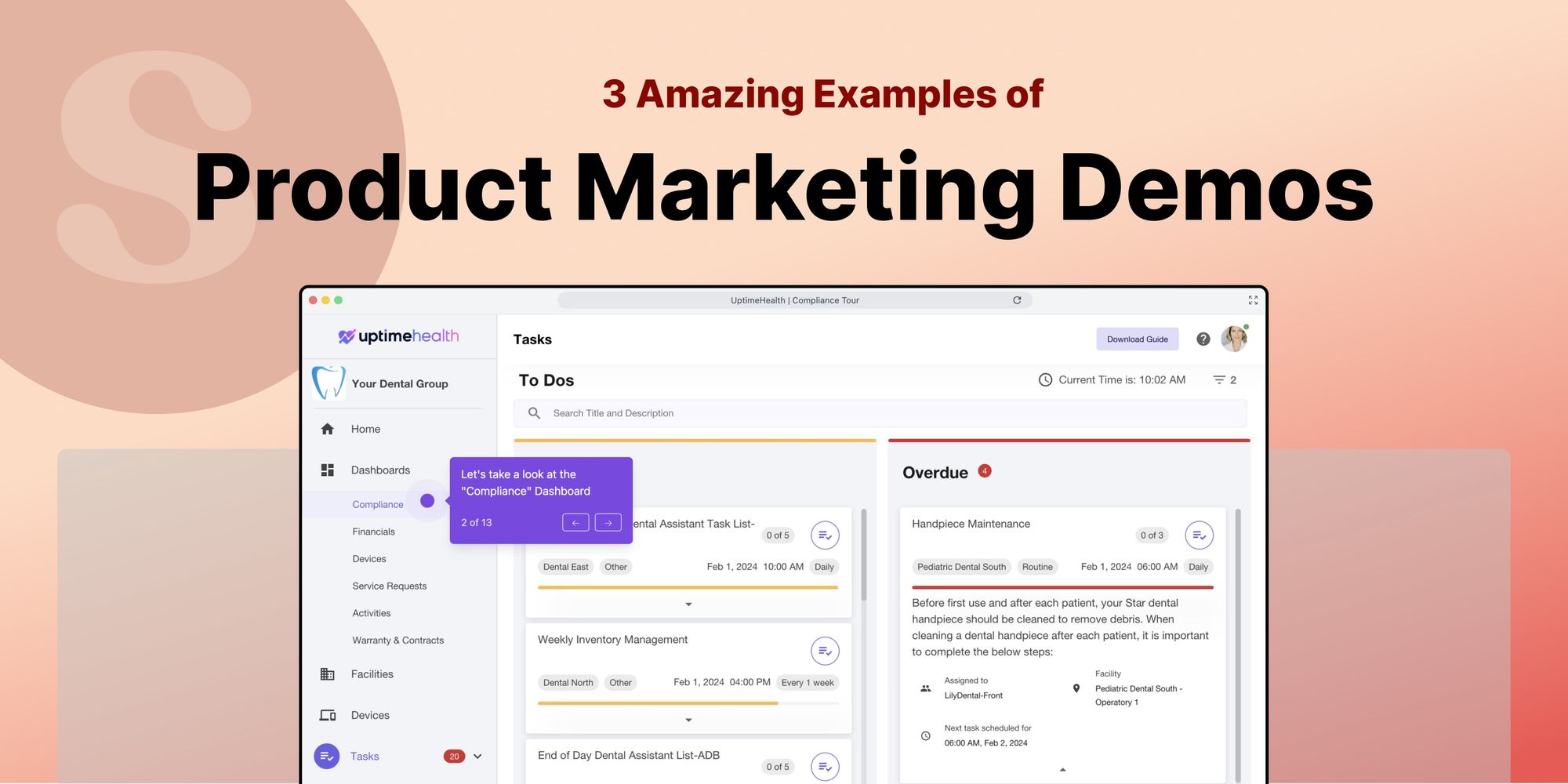
| Feature | Supademo |
|---|---|
| Best for | Customer Success, Sales, Onboarding, Marketing |
| Pricing | Starts at $27/mo |
| Recording type | HTML, Screenshot, Video, Figma Plugin, Video/Image Uploads |
| Desktop recording | ✅ Available |
| Team collaboration | ✅ Free and paid team members |
| AI voiceovers | ✅ Yes (15+ languages) |
| Record your own voiceovers | ✅ Yes |
| AI text generation | ✅ Yes (15+ languages) |
| Time to launch | ✅ <5 mins |
| Custom URL | ✅ Yes |
| Detailed analytics | ✅ Yes |
| Support | ✅ Yes (including free plans) |
| Figma Plugin | ✅ Yes |
| Free trial | ✅ Yes |
| Free plan | ✅ 5 interactive demos |
User review:

Pros:
• No-code, super fast to build
• Onboard users better by embedding a self-paced in-app product tour
• Drive adoption by adding to product updates and changelogs
• Promote learning-by-doing in support docs and knowledge bases
• Clean analytics on viewer drop-offs
Cons:
• Limited integrations
3. Zapier
Zapier is an easy-to-use, no-code automation tool that enables users to set up workflows that automatically move data between apps or trigger actions based on specific events.
It helps businesses eliminate manual data entry and reduce the time spent on mundane tasks.
With a drag-and-drop interface, it’s simple to set up for anyone, from non-technical users to power users, while offering advanced features like conditional logic and multi-step workflows.
G2 review:

Pros:
• Drag-and-drop ease
• Massive ecosystem
• Legit support docs
Cons:
• Can get expensive at scale
• Debugging can be tedious
4. Clay
Clay is a powerful data enrichment platform that helps businesses gather detailed information about potential customers or leads. The platform combines data from over 100 sources with AI-driven research agents to provide real-time insights into prospects’ professional background, online mentions, and even technology usage.
With its intuitive spreadsheet interface, Clay makes it easy to track and organize this data. Its focus on rich, dynamic data allows businesses to engage with prospects on a more informed and personal level.
Hot take from LinkedIn:
Pros:
• Powerful enrichment features
• Airtable-style UX
• AI-assisted suggestions
Cons:
• Requires a strategy; it will not compensate for poor messaging
• Expensive for individual operators
5. ChartMogul

ChartMogul is an analytics platform designed for subscription-based businesses to track and optimize their recurring revenue. It integrates seamlessly with payment processors like Stripe and Chargebee to pull data on key metrics like Monthly Recurring Revenue (MRR), churn rate, Customer Lifetime Value (CLV), and more.
ChartMogul’s advanced segmentation allows businesses to break down revenue data by plan type, geography, or channel, helping finance and growth teams understand trends and identify areas for optimization.
What a marketer says:

Pros:
• Clean dashboards with real SLG & PLG metrics
• Churn & retention deep dives
• Segments by channel, geography, plan type, etc.
Cons:
• May feel dry for those not inclined toward data analysis
• Smaller teams might find it overly complex to handle
6. Lemlist
Lemlist specializes in sending personalized cold emails at scale, making your outreach more engaging and effective. Unlike generic email tools, Lemlist allows users to create customized email campaigns that include dynamic elements such as personalized images, videos, and landing pages. These elements make the emails feel less robotic and more tailored to the recipient.
Lemlist also features an email warm-up system that gradually improves deliverability and prevents emails from landing in spam folders. Additionally, the tool automates follow-ups, ensuring no prospect is forgotten, and its tracking capabilities help optimize campaigns by analyzing open rates, clicks, and responses.
User review:
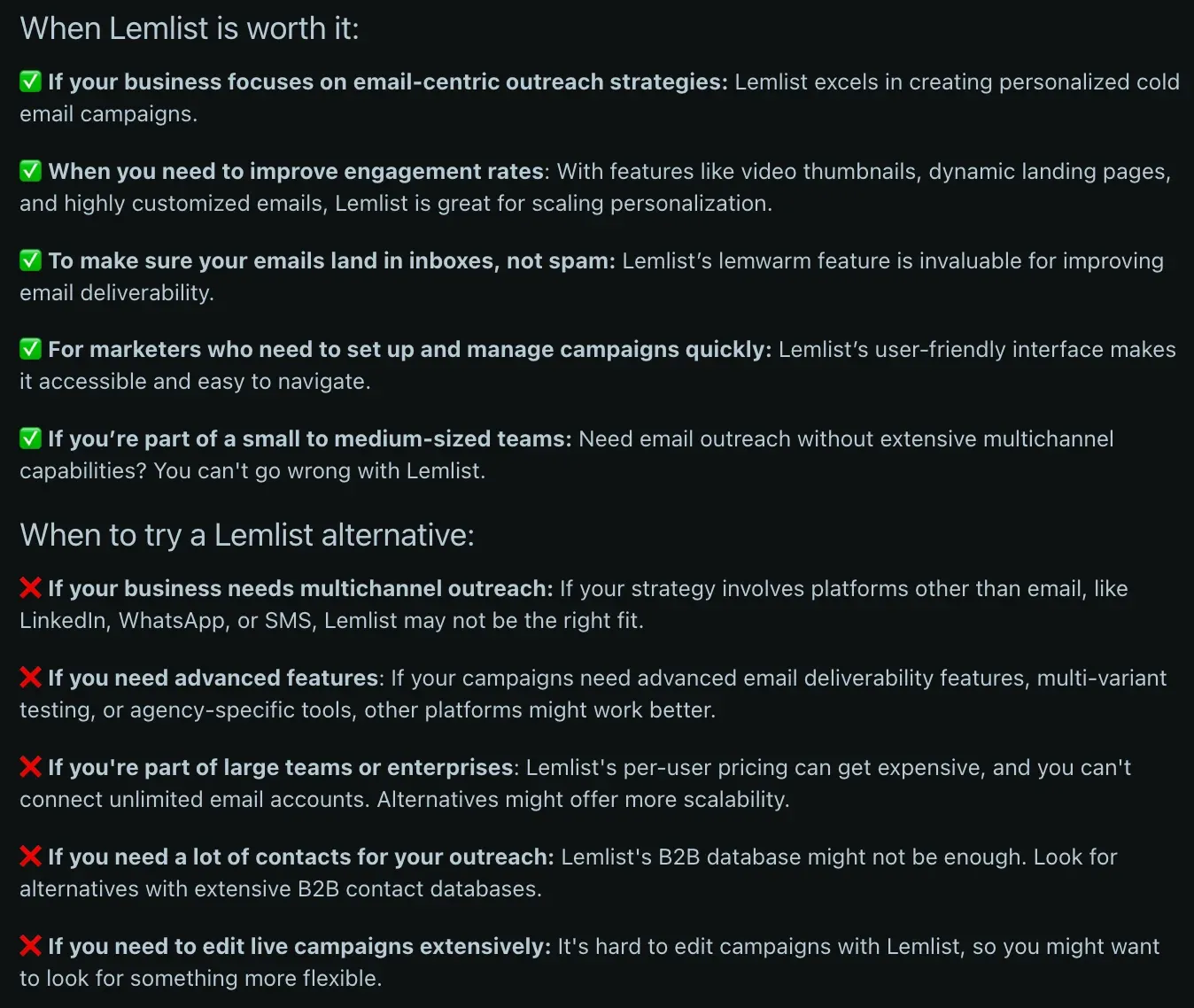
Pros:
• Dynamic image personalization leads to higher response rates
• Great deliverability tools
• Strong community
Cons:
• May be prone to bugs with heavy email sends
• User interface can become cumbersome at scale
7. Relay.app
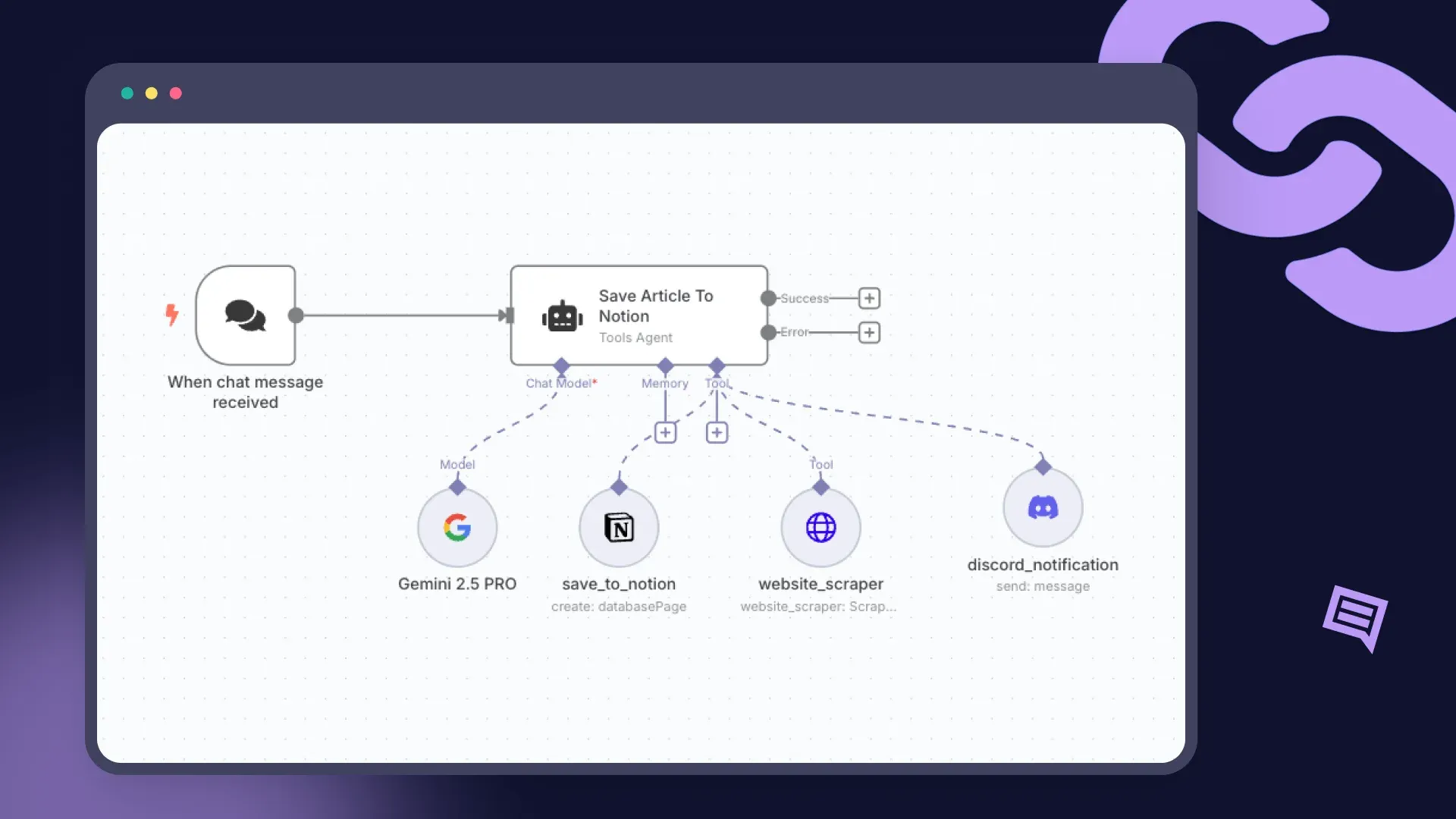
Relay.app enables teams to set up workflows that automatically complete repetitive tasks, but also include human checkpoints for approval or decision-making. This feature is perfect for processes where automation works well for most steps, but human judgment is necessary for critical decisions.
The tool’s visual interface makes it easy to design workflows, while its conditional logic ensures that tasks follow the right path based on specific circumstances.
User love:
Pros:
• Intuitive and aesthetically pleasing interface
• Smart conditional logic
• Great for small marketing teams with big needs
Cons:
• Still growing its integration catalog
• Might outgrow it if your team is enterprise
8. n8n
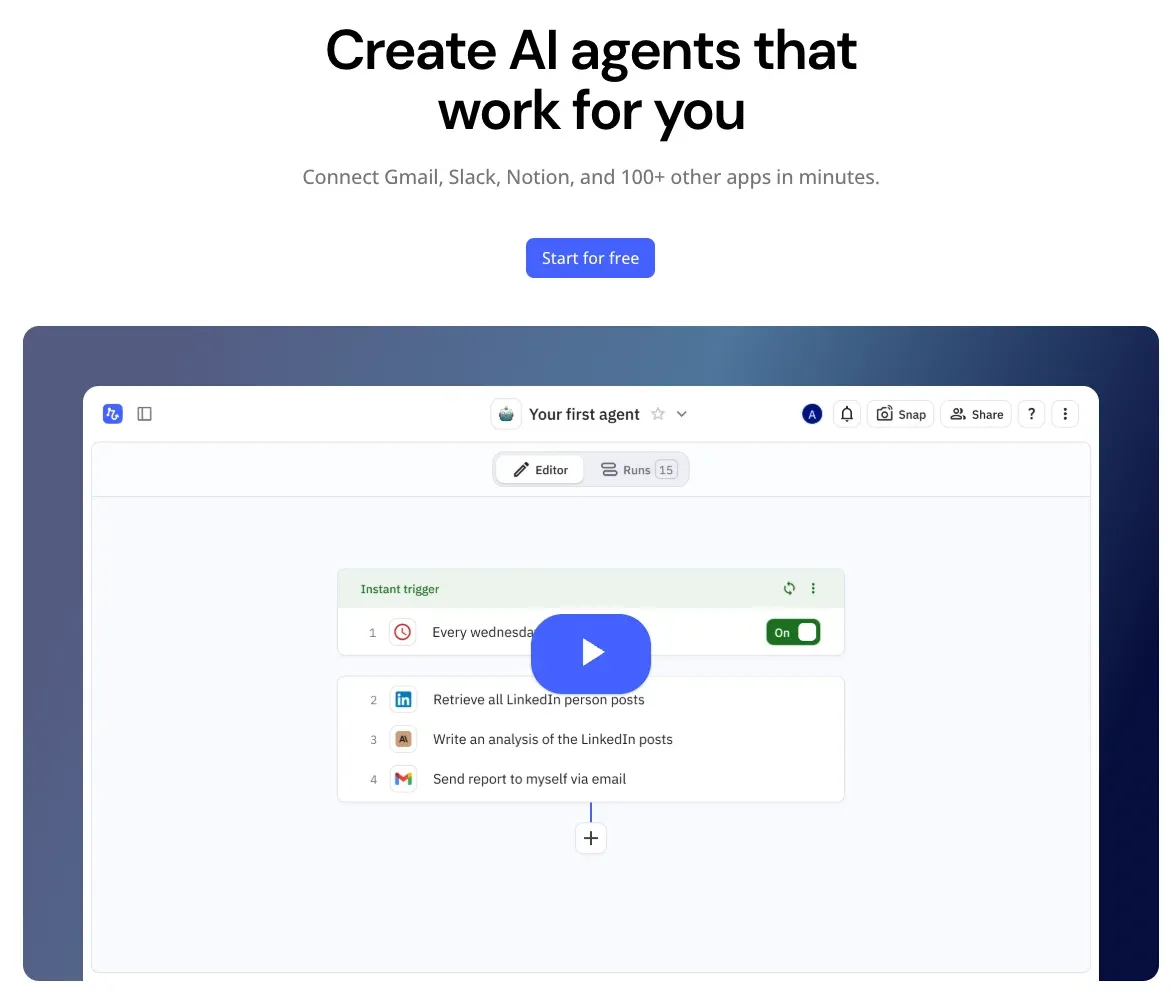
n8n is an open-source workflow automation tool that gives users full control over their automations. Unlike cloud-based platforms, n8n allows businesses to host workflows on their own servers, providing complete control over data security and customization. The platform integrates with hundreds of apps and supports custom nodes, JavaScript functions, and even Git integration for version control.
It’s especially useful for technical teams who need flexibility and scalability, as they can tailor workflows to meet very specific needs. Although it requires some technical knowledge to set up, n8n is a powerful solution for businesses looking for advanced automation capabilities.
Why techy marketers love it:
Pros:
• Infinite customization
• Free if self-hosted
• Git-friendly and API-native
Cons:
• Not a no-code solution (unless you are very technically proficient)
• User interface is designed for developers
9. Ahrefs
Ahrefs is a leading SEO toolset that provides businesses with in-depth insights into their website’s search engine performance and their competitors’ strategies. It helps users perform keyword research, track backlink profiles, analyze content marketing gaps, and monitor search rankings.
With one of the largest backlink databases in the world, Ahrefs provides a detailed view of the links pointing to your site and those of your competitors. Whether you're looking to optimize content, discover new keywords, or spy on competitors, it gives you the data you need to stay ahead in the SEO game.
Why marketers love it:
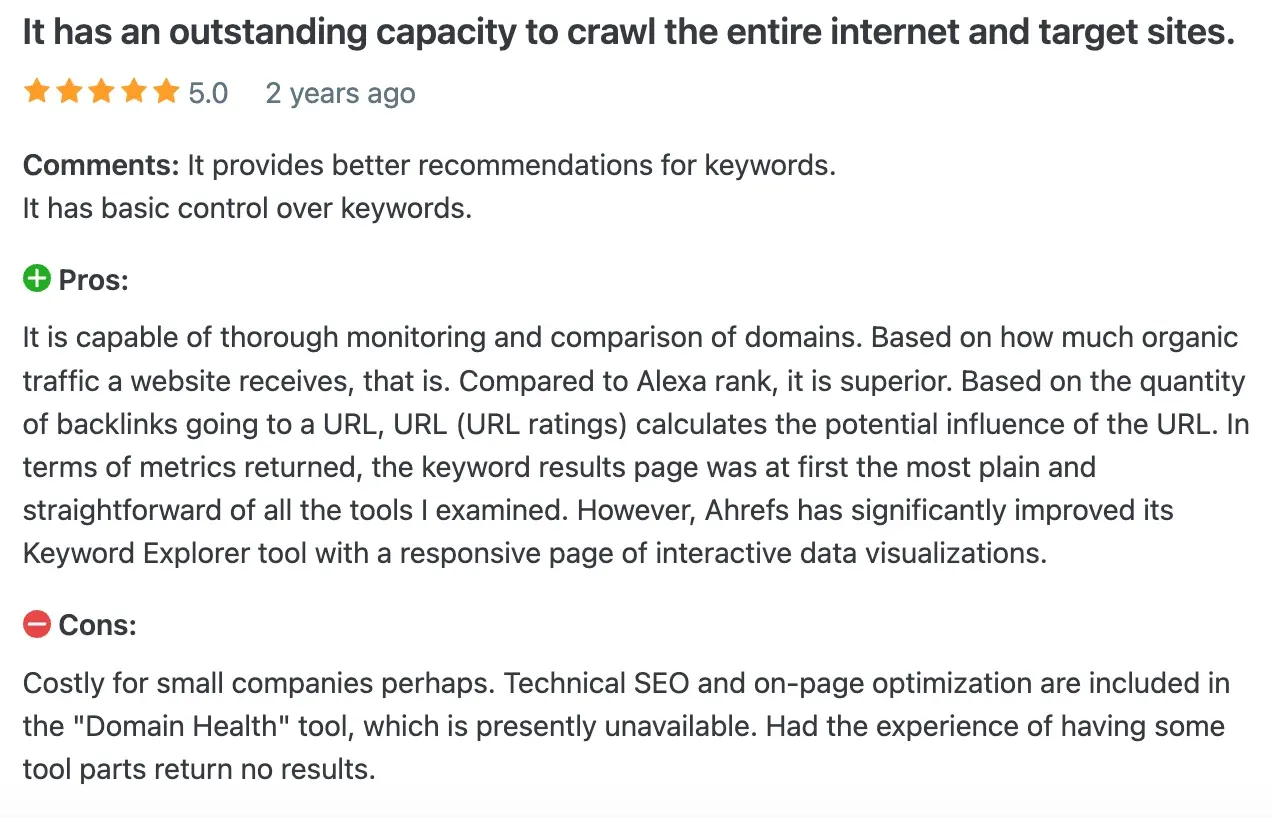
Pros:
• Best-in-class backlink explorer
• Keyword tools with AI-powered recommendations personalised to your website
• Exceptional competitive intelligence
Cons:
• Starting at $99, it is relatively expensive
• There is a learning curve
10. Contrast
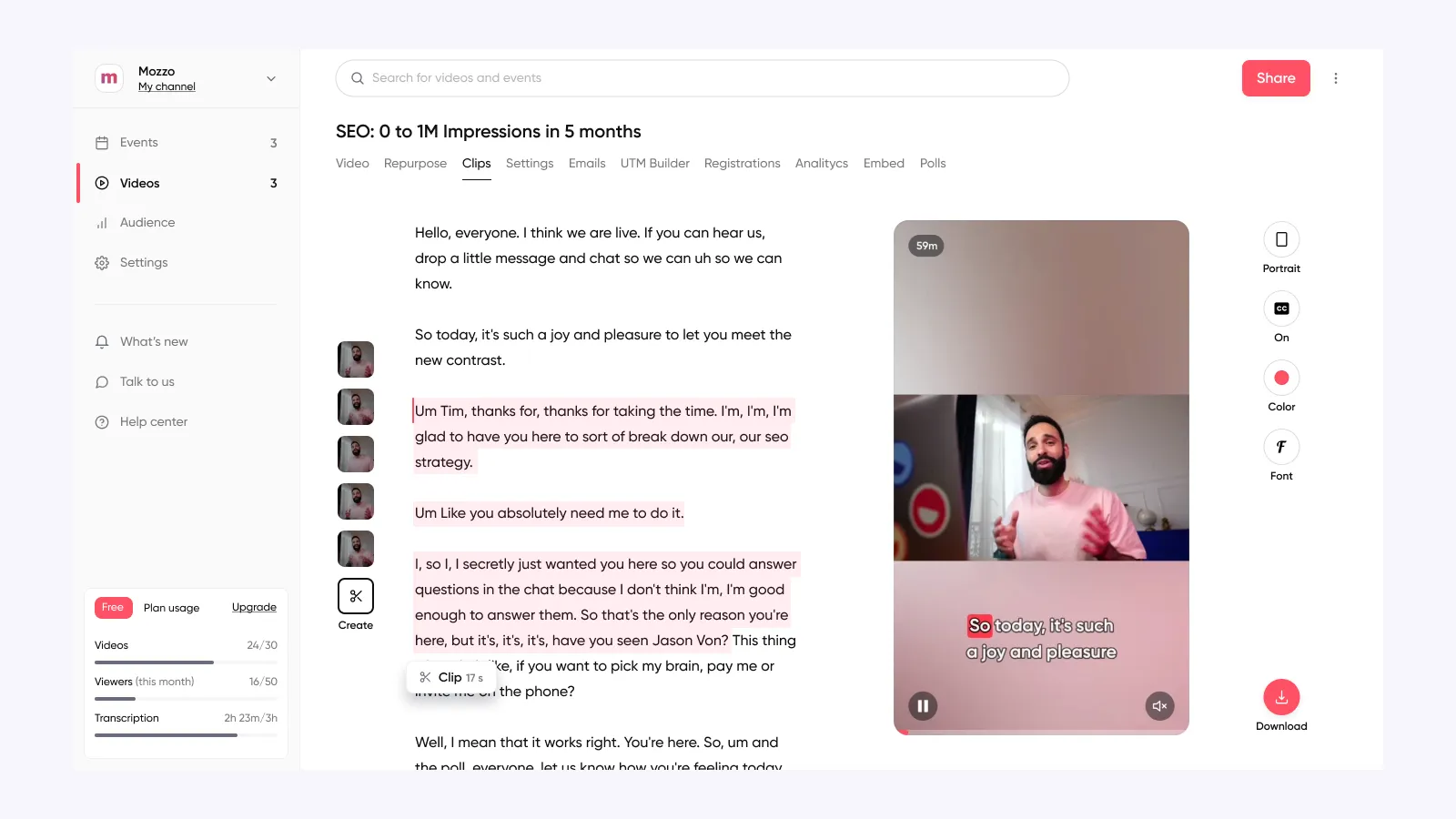
Contrast is a platform designed to transform traditional webinars into engaging, interactive experiences. It offers features like live polls, breakout rooms, and embedded calls-to-action (CTAs) that keep audiences involved during the webinar.
Beyond basic presentations, Contrast lets you interact with participants in real time, which increases engagement and conversion rates. The platform also automates follow-up sequences based on attendee behavior, ensuring that no leads are missed. Contrast is especially valuable for B2B businesses that use webinars as a key part of their lead generation and nurturing strategy.
User review:
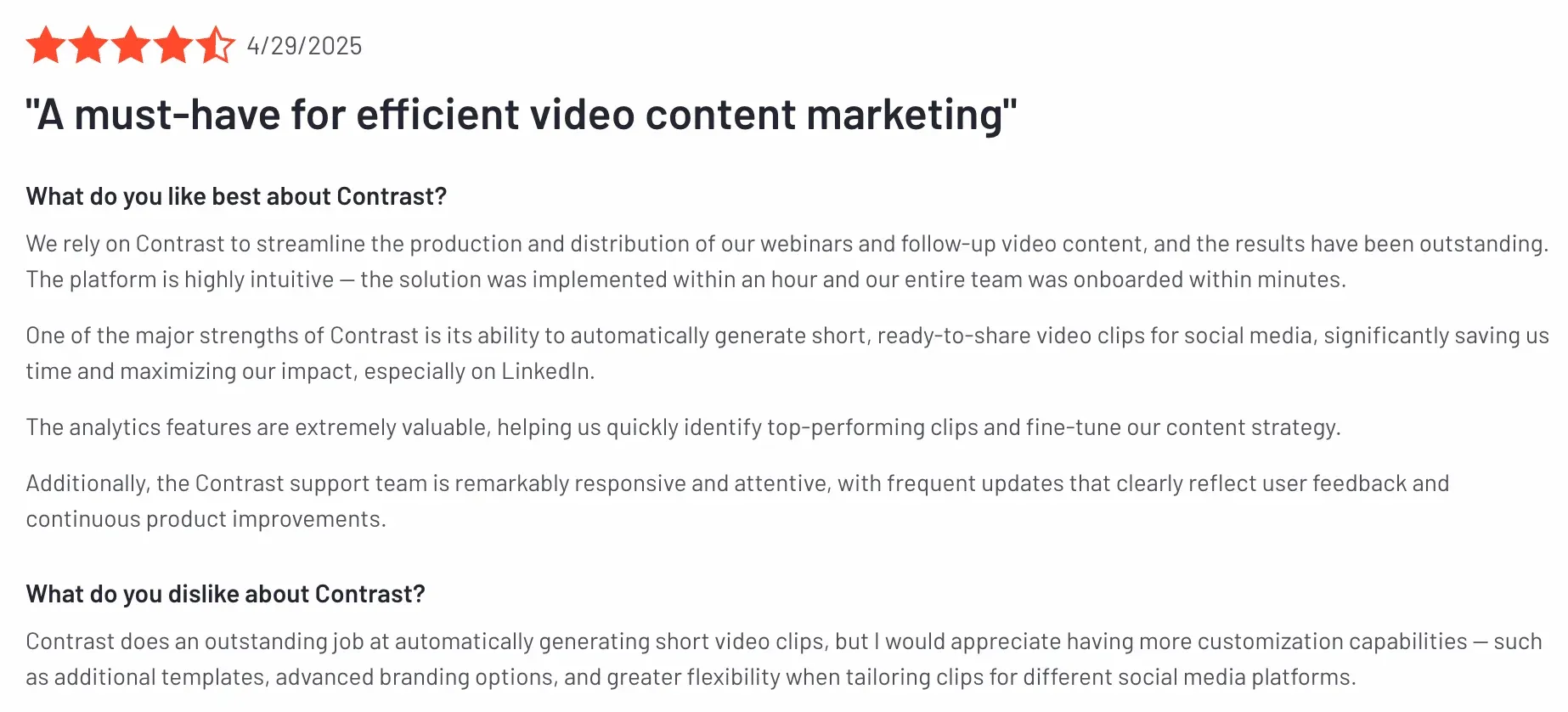
Pros:
• Designed for engagement, not just talking
• Great for PLG demos
• Native CRM integrations
Cons:
• Still evolving; lacks some key features
• Targeted primarily at niche use cases, not suitable for all events
11. Cello
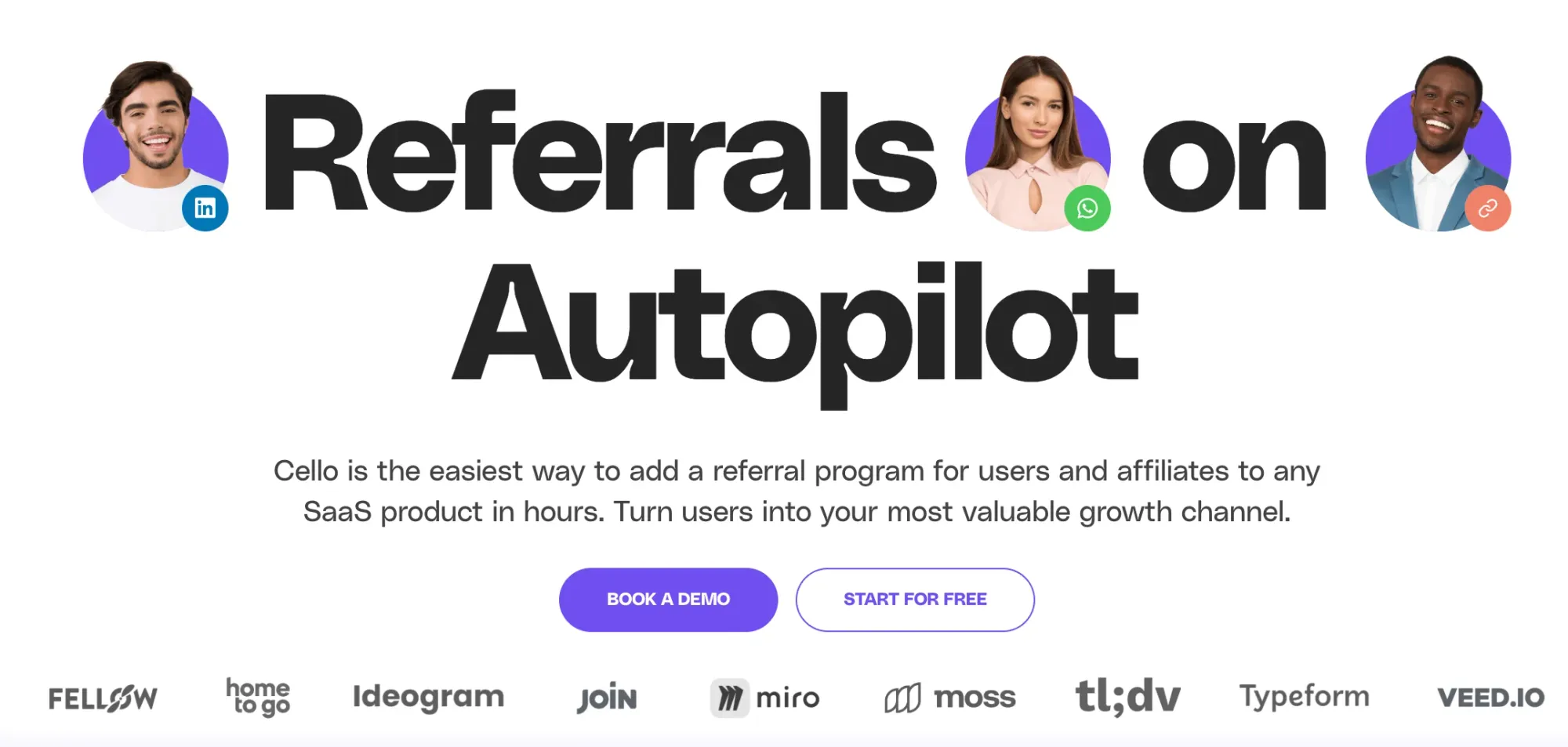
Cello is a customer feedback tool that collects real-time insights from users while they are actively interacting with your product. The in-context feedback helps businesses understand how users feel during their experience, enabling them to make timely improvements or adjustments.
It is ideal for product and marketing teams looking to improve the user experience and continuously gather valuable insights without interrupting the user flow.
User review:
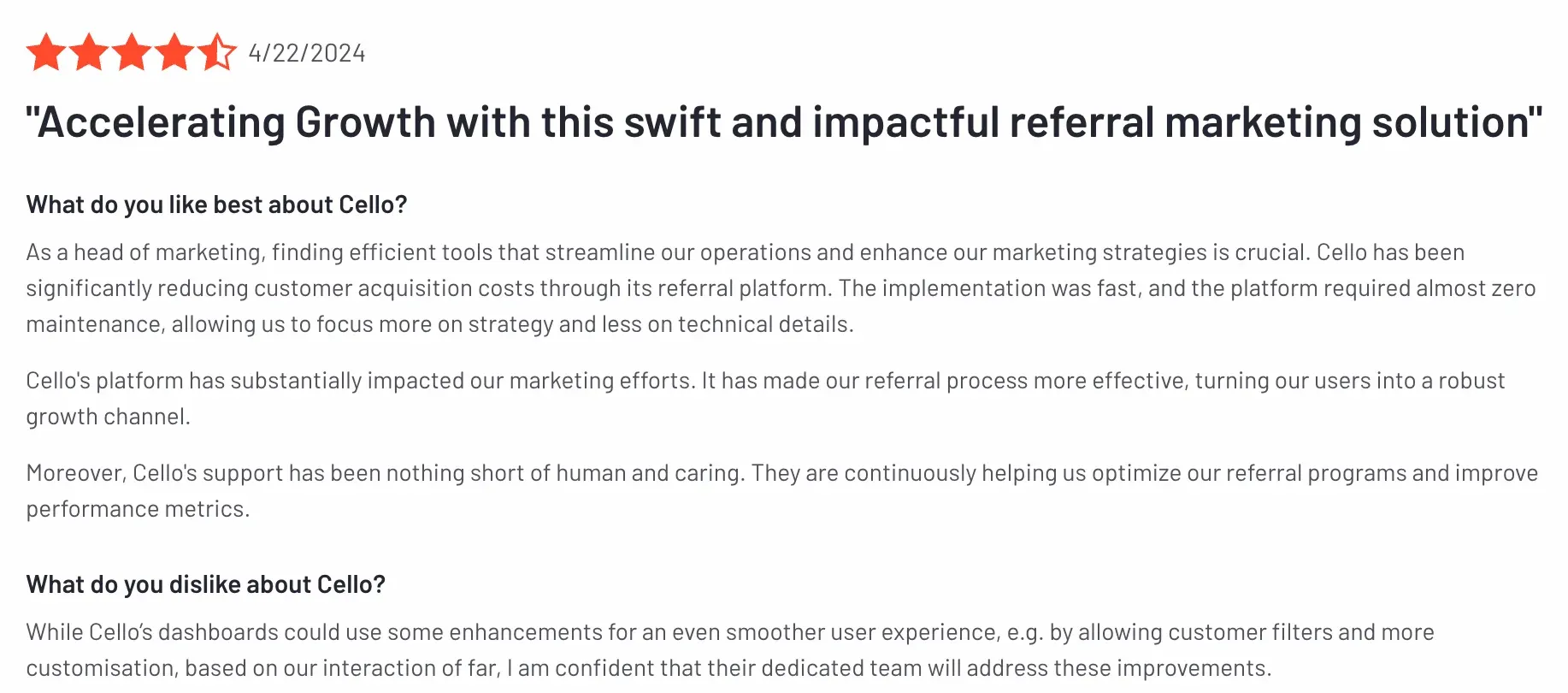
Pros:
• Lightweight and clean UI
• Great analytics
• Works across web & product
Cons:
• Not great for large-scale email surveys
• Basic branding options
12. Passionfroot
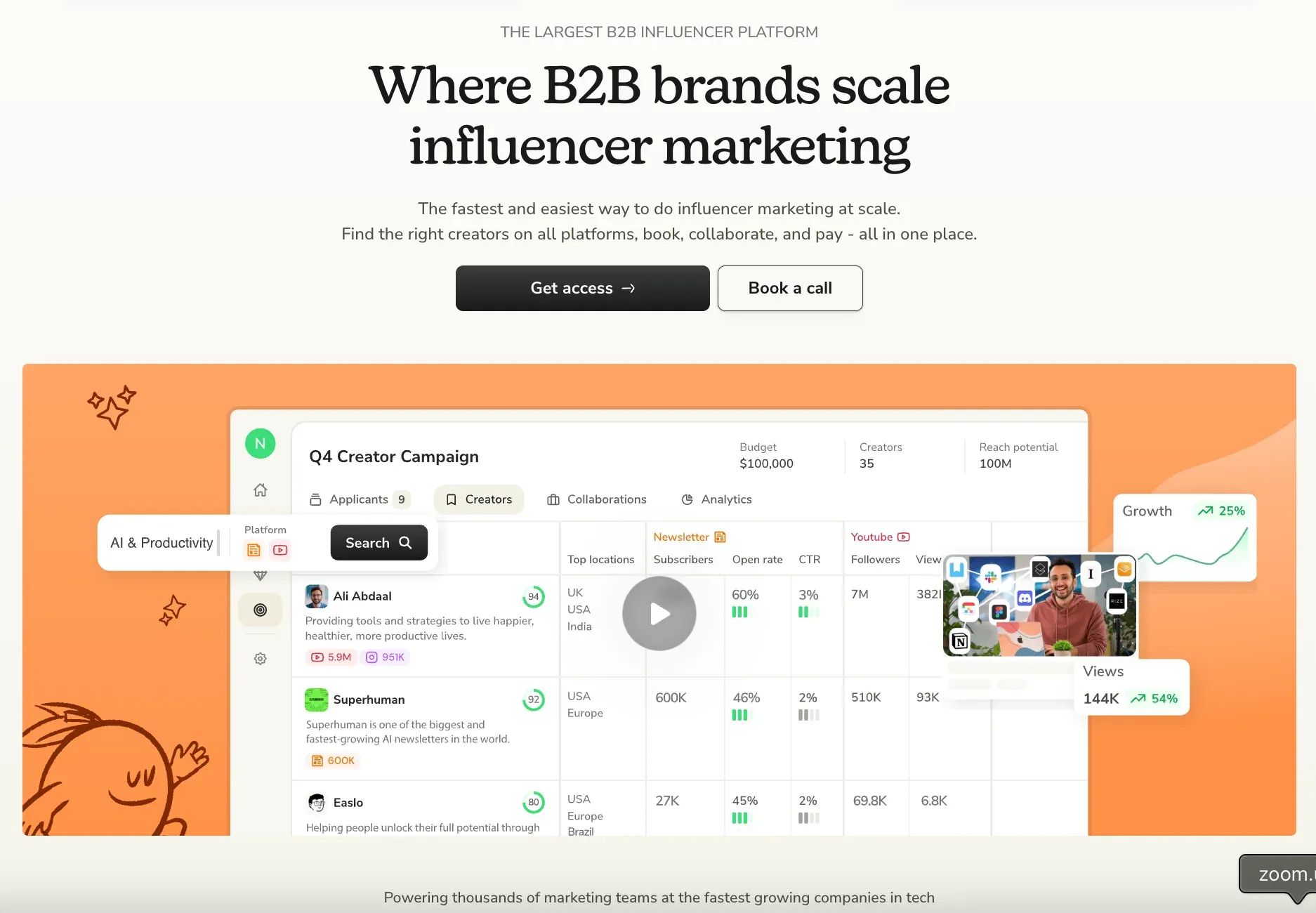
Passionfroot serves as the operational hub for managing influencer and creator partnerships. It automates many of the administrative tasks involved in influencer marketing, such as contract negotiations, deliverable tracking, and invoicing.
By centralising all partnership activities, Passionfroot makes it easier for brands to collaborate with creators and track the performance of their campaigns. The platform also provides performance analytics, allowing brands to measure the impact of influencer collaborations. It’s an all-in-one solution for marketing teams looking to streamline their influencer marketing efforts.
User review:

Pros:
• Purpose-built for creators/brands
• Automates the messy stuff (like tracking payments)
• Gorgeous interface
Cons:
• Not for B2B or traditional sales
• Requires some setup for workflows
13. Senja
Senja simplifies the process of collecting, managing, and displaying testimonials, eliminating the need for manual email requests or screenshots. It also generates sleek testimonial widgets for your website.
The platform eliminates the need for manually requesting testimonials, streamlining the process and ensuring a consistent flow of authentic customer stories.
From X:
Alex Hormozi told me that people will trust the opinions of others more than your own.
— Max Blade (@_MaxBlade) September 7, 2024
I think buying into a platform like senja to make it effortless for someone to leave you a killer review is a no brainer…
Receiving kick ass reviews are an insane dopamine rush.
It’s like… pic.twitter.com/EbHCSHfBeR
Pros:
• Extremely fast to collect reviews
• Beautiful testimonial displays
• Embeddable, no-code widgets
Cons:
• Limited customization unless you're on higher plans
• Doesn't manage case studies (yet)

14. supermeme.ai
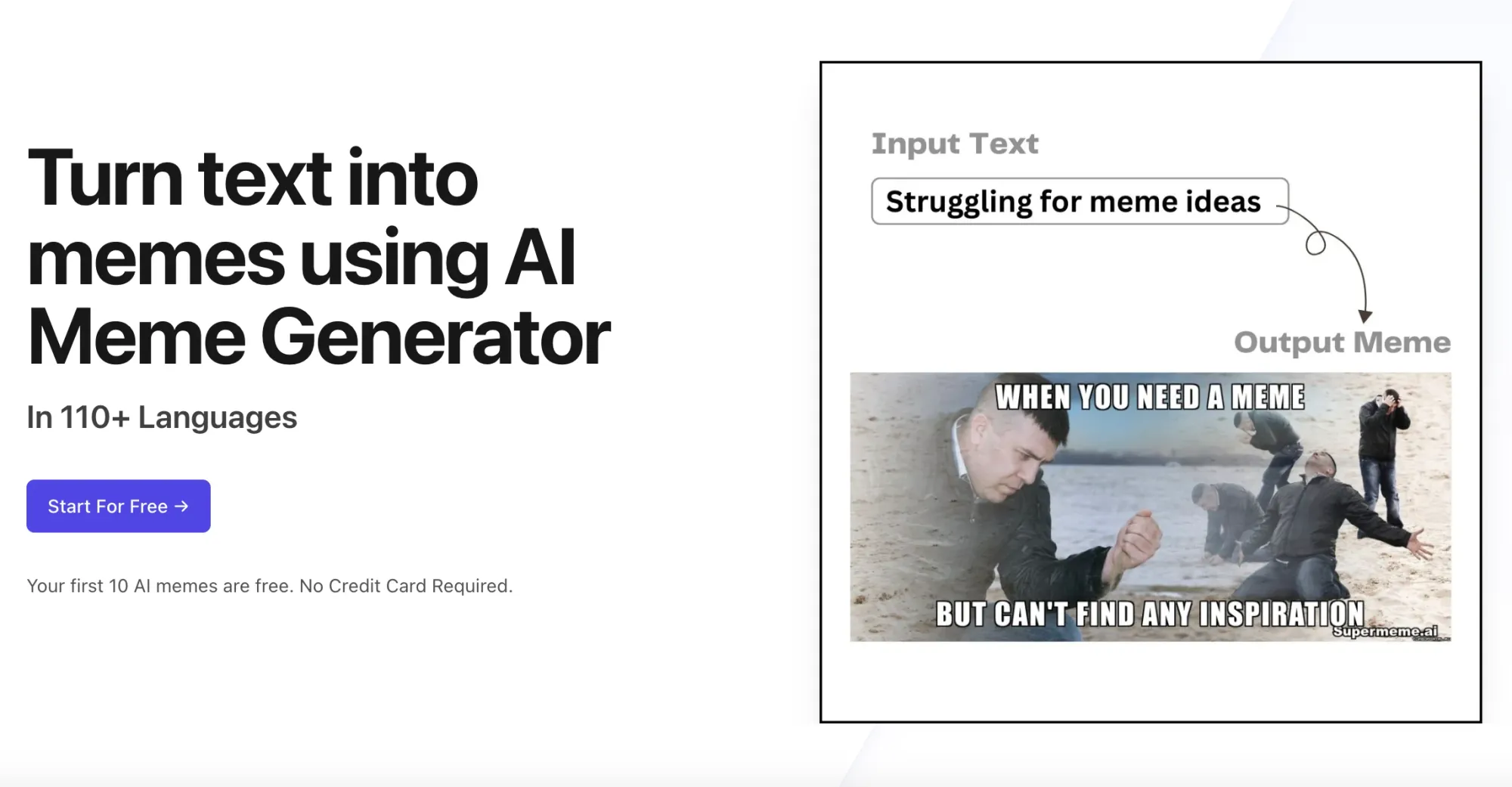
supermeme.ai is an AI-powered tool that generates memes tailored to your brand’s voice and tone. Content marketers and social media managers can use Supermeme.ai to create humorous, engaging memes quickly, using the platform’s AI to ensure that the memes align with their brand’s personality.
It’s an innovative way to add some fun to marketing campaigns and generate demand for your brand, especially for social media platforms where humor and relatability are key to engagement.
From a user:

Pros:
• Instant meme generation from text input
• Can train it on your brand tone
• Engages even boring B2B audiences
Cons:
• Not always on-brand unless tweaked
• Works best with human curation
15. Intercom

Intercom is an all-in-one customer communication platform that provides businesses with tools for e-commerce live chat, customer support, and marketing automation. The platform includes AI-powered chatbots to assist with routine queries and a help desk to manage support tickets.
From G2:
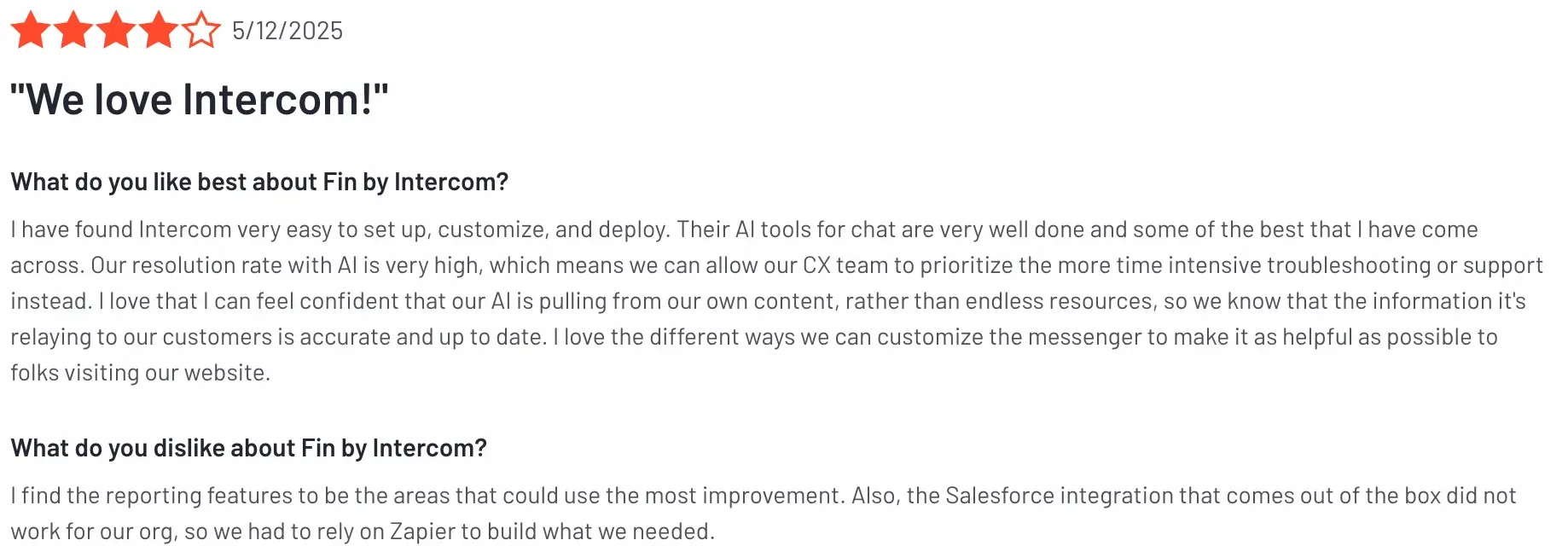
Pros:
• Smart chatbots that don’t annoy people
• Onboarding tours, triggered emails, in-app messages
Cons:
• Can become costly
• User interface can be overwhelming
16. Userpilot
Userpilot is a no-code platform that helps businesses improve user onboarding and feature adoption through in-app experiences. The platform lets product teams create guided tours, checklists, and announcements that walk users through features and help them get the most out of a product.
It integrates easily into web-based applications, requiring no development resources. The tool also tracks user behavior to deliver contextual guidance at the right time, ensuring users don’t feel overwhelmed. This leads to higher engagement and improved retention rates by helping users understand the value of new features quickly.
User review:
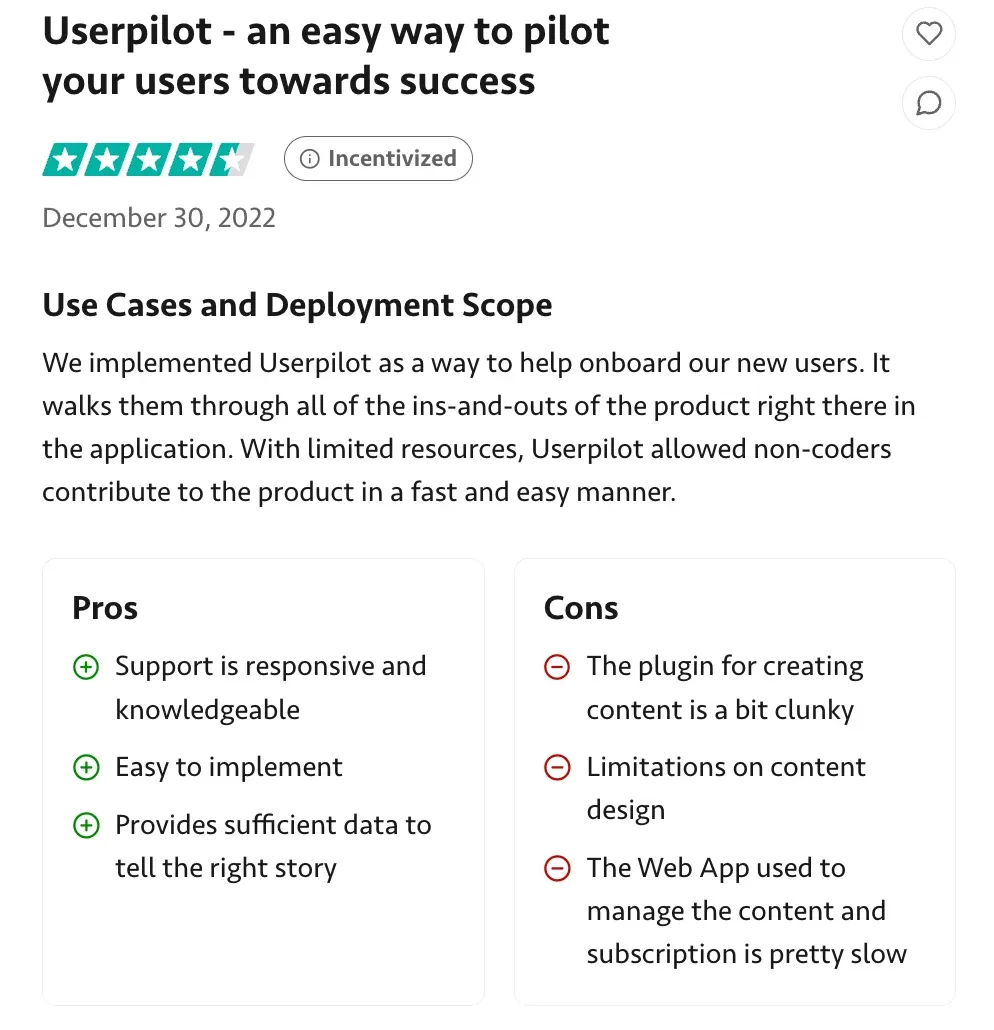
Pros:
• No-code setup
• Contextual onboarding & nudges
• Tracks adoption over time
Cons:
• A/B testing needs work
• Works best on modern frontends (e.g., React)
17. Veed.io
Veed.io is a simple, browser-based video editing platform designed for quick and easy content creation. It allows users to add subtitles, remove backgrounds, and even clone voices using AI, without needing advanced video editing skills.
Perfect for marketers and social media managers, Veed.io streamlines video production for product marketing videos and social media content. The platform’s user-friendly interface and time-saving features make it ideal for businesses that need to create high-quality video content without the hassle of complex software or expensive equipment.
User review:
Pros:
• Clean UI for non-editors
• Auto subtitles & screen record
• Templates for YouTube, IG, TikTok, etc.
Cons:
• Lacks advanced editing finesse
• Export quality can be slow on free plan
18. Buffer
Buffer is a straightforward social media management tool that helps users schedule, publish, and track content across multiple platforms. It supports major networks like Twitter, Facebook, and Instagram, and allows teams to plan posts in advance for consistent social media presence.
It also includes analytics that helps users measure the performance of their posts, providing insights into engagement and reach. Buffer's especially useful for small businesses and solo marketers who want to maintain an active online presence without spending too much time on manual posting.
From a user:

Pros:
• Clean, clutter-free UX
• Queue once, publish everywhere
• Good reporting and link-in-bio features
Cons:
• No TikTok auto-post yet
• Not ideal for large social teams
19. Canva
Canva is an intuitive, online graphic design tool that makes it easy for anyone—no design skills required—to create professional-looking graphics. Whether you’re making social media posts, presentations, flyers, or marketing materials, Canva’s drag-and-drop interface and thousands of templates simplify the design process.
The platform also includes AI-powered tools like Magic Resize and Background Remover, making it even easier to adjust designs for different formats. It’s perfect for marketers, small business owners, or anyone who needs to create attractive visual content without a professional designer.
User review:
Pros:
• Templates for literally everything
• Brand kit keeps your team consistent
• Magic resize + AI text/image tools
Cons:
• Less flexible than Figma
How to pick the right growth marketing tools for your team
Think of this as your growth stack builder. Filter by stage, motion, and team type, and plug in growth marketing platforms that actually make sense for your context.
If you’re early-stage (0–1 GTM):
Your goal: Build traction fast without overspending. Focus on tools that are flexible, affordable, and do multiple jobs well.
| Function | Tools |
|---|---|
| Design & content | Canva, Veed.io |
| Email & onboarding | Customer.io (Starter), Intercom (Free) |
| Analytics | ChartMogul (Free) |
| Social scheduling | Buffer |
| Automation | Zapier |
| Product demos | Supademo |
| Social proof | Senja, Supermeme.ai |
If you’re PLG:
Your goal: Drive self-serve activation, feature adoption, and expansion from inside the product.
| Function | Tools |
|---|---|
| Onboarding | Userpilot |
| In-app messaging | Intercom, Customer.io |
| Demos & tours | Supademo |
| Feedback collection | Cello |
If you run heavily on outbound / creator collabs:
Your goal: Hit volume and personalization across cold outreach and influencer/creator partnerships.
| Function | Tools |
|---|---|
| Cold email | Lemlist, Clay |
| Creator CRM | Passionfroot |
| Testimonials | Senja |
| Automation | Zapier, Relay.app |
| Onboarding | Supademo |
If you’re a mid-stage team with PMF:
Your goal: Scale the working growth loops, improve attribution, and increase customer lifetime value.
| Function | Tools |
|---|---|
| Analytics | ChartMogul, Ahrefs |
| Workflow automation | Relay.app, n8n |
| Webinars & demos | Contrast |
| Product demos | Supademo |
If you’re scaling or enterprise-ready:
Your goal: Systemize GTM and standardize workflows.
| Function | Tools |
|---|---|
| Automation | n8n, Zapier |
| Messaging & support | Intercom, Customer.io |
| Attribution & SEO | Ahrefs, ChartMogul |
| Sales enablement & demos | Supademo |
If you’re a solo marketer or small GTM team:
Your goal: Choose tools that make you faster, not busier. Templates, AI, and simplicity win.
| Function | Tools |
|---|---|
| Design & visuals | Canva, Veed.io |
| Social scheduling | Buffer |
| Automation | Zapier |
| Email marketing | Customer.io |
| Testimonials | Senja |
| Quick demos | Supademo |
| Engagement content | Supermeme.ai |
Final thoughts
Growth marketing isn’t just tactics. It’s systems and signals. The growth marketing tools you pick? They’re just amplifiers. They don’t make your bets. They make your bets matter.
Speaking of which, if you're onboarding users, educating buyers, or running PLG motion, try Supademo for free.

Supademo lets you show, not just tell, turning your product into your best growth asset.
No code, no friction. Just interactive demos that close gaps faster.
Let your stack work with you, not against you. And keep shipping. Growth doesn’t wait!


